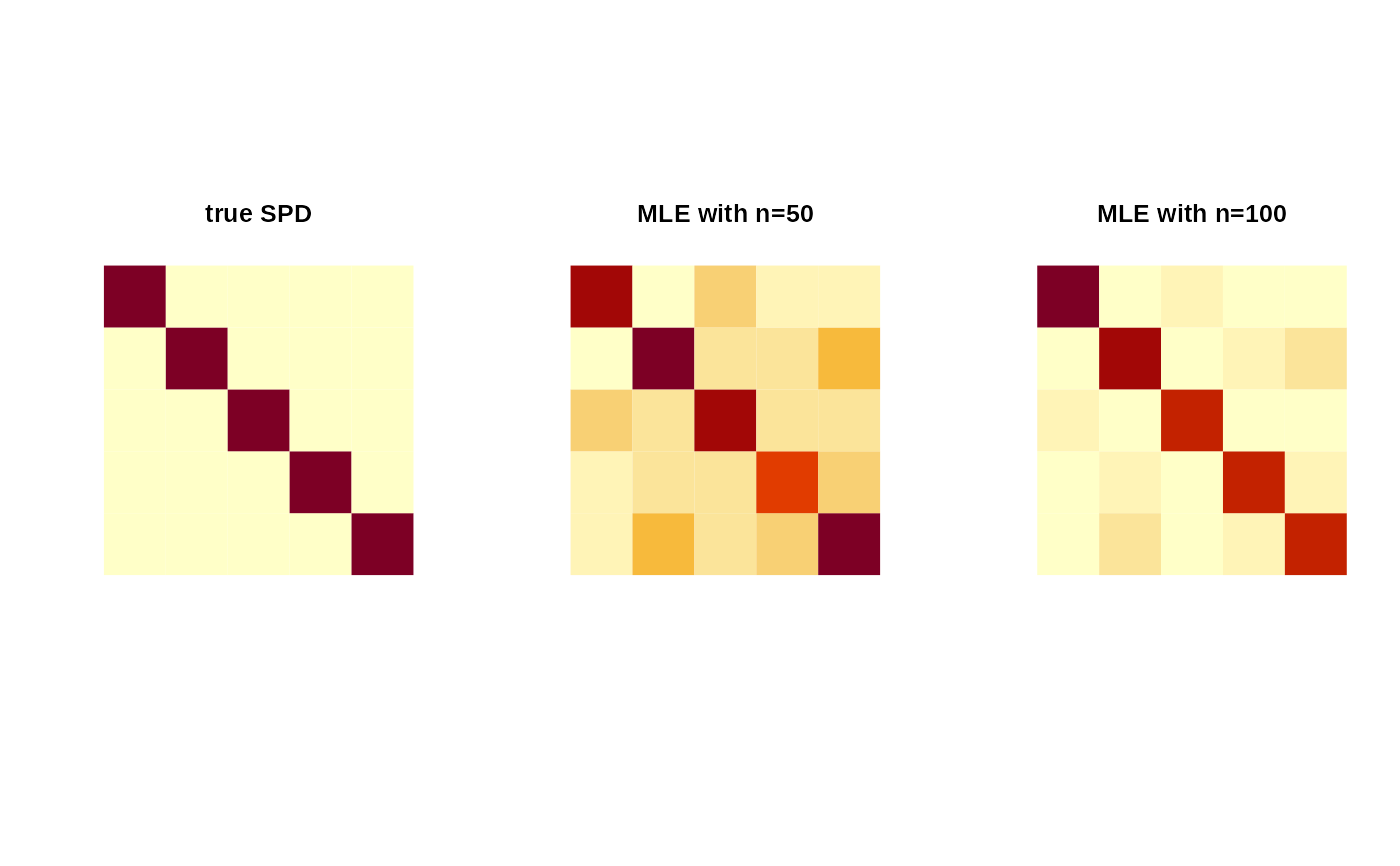For Stiefel and Grassmann manifolds \(St(r,p)\) and \(Gr(r,p)\), the matrix variant of ACG distribution is known as Matrix Angular Central Gaussian (MACG) distribution \(MACG_{p,r}(\Sigma)\) with density $$f(X\vert \Sigma) = |\Sigma|^{-r/2} |X^\top \Sigma^{-1} X|^{-p/2}$$ where \(\Sigma\) is a \((p\times p)\) symmetric positive-definite matrix. Similar to vector-variate ACG case, we follow a convention that \(tr(\Sigma)=p\).
Arguments
- datalist
a list of \((p\times r)\) orthonormal matrices.
- Sigma
a \((p\times p)\) symmetric positive-definite matrix.
- n
the number of samples to be generated.
- r
the number of basis.
- ...
extra parameters for computations, including
- maxiter
maximum number of iterations to be run (default:50).
- eps
tolerance level for stopping criterion (default: 1e-5).
Value
dmacg gives a vector of evaluated densities given samples. rmacg generates
\((p\times r)\) orthonormal matrices wrapped in a list. mle.macg estimates
the SPD matrix \(\Sigma\).
References
Chikuse Y (1990). “The matrix angular central Gaussian distribution.” Journal of Multivariate Analysis, 33(2), 265–274. ISSN 0047259X.
Mardia KV, Jupp PE (eds.) (1999). Directional Statistics, Wiley Series in Probability and Statistics. John Wiley \& Sons, Inc., Hoboken, NJ, USA. ISBN 978-0-470-31697-9 978-0-471-95333-3.
Kent JT, Ganeiber AM, Mardia KV (2013). "A new method to simulate the Bingham and related distributions in directional data analysis with applications." arXiv:1310.8110.
Examples
# -------------------------------------------------------------------
# Example with Matrix Angular Central Gaussian Distribution
#
# Given a fixed Sigma, generate samples and estimate Sigma via ML.
# -------------------------------------------------------------------
## GENERATE AND MLE in St(2,5)/Gr(2,5)
# Generate data
Strue = diag(5) # true SPD matrix
sam1 = rmacg(n=50, r=2, Strue) # random samples
sam2 = rmacg(n=100, r=2, Strue) # random samples
# MLE
Smle1 = mle.macg(sam1)
Smle2 = mle.macg(sam2)
# Visualize
opar <- par(no.readonly=TRUE)
par(mfrow=c(1,3), pty="s")
image(Strue[,5:1], axes=FALSE, main="true SPD")
image(Smle1[,5:1], axes=FALSE, main="MLE with n=50")
image(Smle2[,5:1], axes=FALSE, main="MLE with n=100")
 par(opar)
par(opar)
